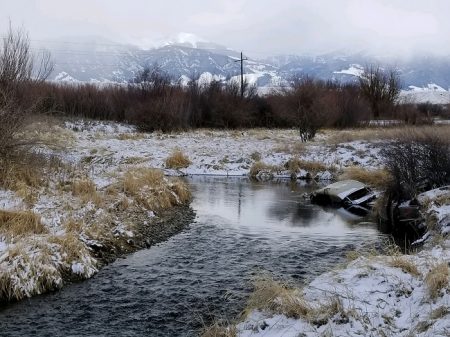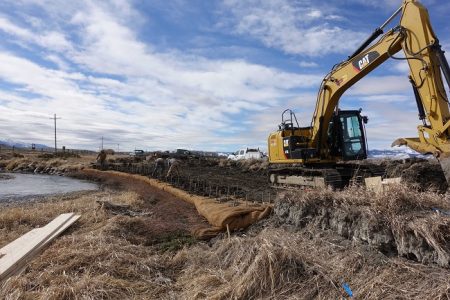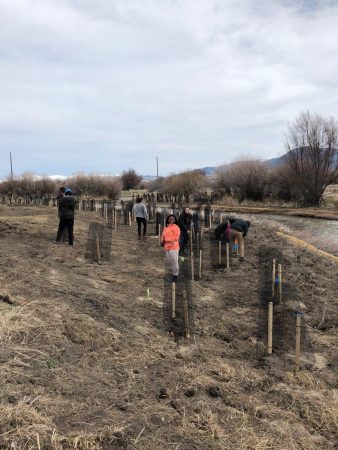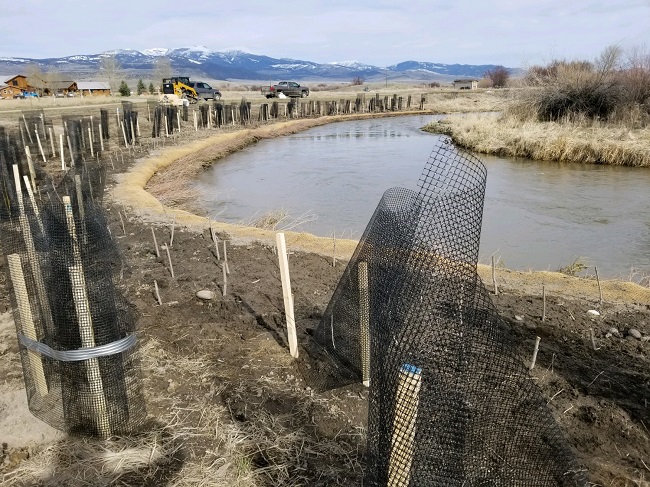Five Questions with a Conservation Expert
The Madison Conservation District has been heading up a major restoration of Jack Creek, a tributary of the Madison River which traverses the Madison Valley Ranch Property. As a contributing landowner, we at the lodge have been privileged to sit in on countless meetings and get a sense of all of the dedication on the part of the Madison Conservation District to drive this project to completion.As an angler, I have volunteered for and supported conservation organizations, but until this project never quite grasped the extensive work that is actually required to protect our fisheries. As a result of this eye-opening experience, I sat down with Sunni Heikes-Knapton, Watershed Coordinator for the MCD, to get a better sense of what it takes to complete a stream restoration project and how anglers and outdoor enthusiasts can get involved.

Tell me a little bit about the Lower Jack Creek Restoration?Jack Creek is an important waterway for fisheries production, agricultural use, and habitat values. Over the years, conditions on the lower section have been degraded, and this project seeks to restore and improve this stretch. Essentially, the purpose of the project on Jack Creek was two-fold: establish a healthy riparian plant community to provide habitat and reduce sediment contributions, and improve sections where the stream has been impacted by humans. We noticed very little natural recruitment of the important shrub and tree species that help keep the stream healthy, and there were some significant areas where the stream had been altered (car bodies placed in the banks, entire sections straightened and channelized). Additionally, some of the banks were depositing large amounts of sediment into the stream, which can have a negative impact on trout spawning in the stream. How long does it typically take to complete such a stream restoration project from start to finish and what is involved?A typical project of this scale will be around 4 years from the first conversations with the landowners to the final work completed. A big part of the time is spent developing the initial plan and getting buy in on the proposed work. Funding has to be secured to develop an initial plan, and then the technical advisers and stakeholders need to be involved in refining the plan. With a final plan, permits can be applied for and funding can be sought to do the work based on the cost estimates developed by the engineering firm. Contractors provide bids for construction, which have to align with the amount of money secured to do the work- if they exceed this amount, or if they can't make the scheduled construction window, the project is put on hold.Since this project uses a technique where dormant willow stems are a crucial ingredient, the window of time when the work can be done is limited to mid-March to mid-April. If any of the other planning details are delayed (permitting, funding, bidding) then we would need to wait a full year to do the work.

Photo by Tom Olivo
What is the biggest obstacle or most unexpected thing you have had to overcome or do to secure a project’s successful completion?Project timing is the biggest logistical challenge, and gathering support is the biggest practical challenge. There are so many working pieces that need to come together in order for the timing and tasks to happen correctly. There are a tremendous number of meetings that take place, and progress can be stalled if decisions aren't made when needed. Since there are so many people involved, each involved party has to review the project progress and contribute to what happens next, and the Madison Conservation District has to approve of all major decisions at their monthly meetings. Securing funding is a unique challenge because it deals with relationships as well as grant writing. I feel like it is more of an art than a science. Many funding entities have specific areas in which they focus, like water quality or fisheries. A multiple benefit project like this has to address these areas very specifically, sometimes down to the number of plants installed or acres of floodplain restored. Once a single entity steps up to say they support the work, it often can result in a higher likelihood of other funders getting on board. However, we see more demand for these limited funds, so the project has to prove its worth. Each request goes through scrutiny, so you also have to be prepared to know what concerns or questions they will likely have, and be able to address them. We do have a good reputation for getting work done effectively, so many funders already trust that we will fulfill the tasks we say we are doing. Getting partial awards for grant requests is not uncommon, and you never know what the response will be because you never know how many other projects are seeking support. Landowner support is a requirement, as all outside funding sources ask what level of engagement the project has from the landowners. What is something that the average angler may not know about the restoration process?The biggest surprise is probably the amount of volunteer support that goes into these types of projects. People in our area understand that improvements on waterways are a benefit to the whole ecosystem, so they are willing to support something even if it is happening on private lands. The total time on this project so far exceeds 800 hours by dozens of people, which is remarkable in its value. The volunteer effort is hard work; physically demanding and often in challenging weather conditions. We keep them going with pots of soup, hot drinks, snacks and sharing stories. My experience as a waitress in college comes in handy for that aspect!What I have seen is that people who really value the outcome will show up and give their time and they get some other benefits too. There is a sense of camaraderie that develops during work days and people feel connected to the project at a personal level. They get to know other community members who are interested in supporting conservation and it makes the work more meaningful. They also like to drive by and actually see that their hard work is making improvements to the stream!

What can I do as a fly fisherman/outdoor enthusiast to help my local waters and assist in projects such as the Lower Jack Creek Restoration?Find a way to give to a project that you value, and get to know what is happening in your area. Get involved in volunteer work days or contribute to the non-profits that support this work (or be willing to serve in their boards or committees). The non-profits involved with this project include the Nature Conservancy, Montana Trout Foundation, Yellow Dog Community and Conservation Foundation, and the Trout and Salmon Foundation. If you know of a property where restoration is needed, consider contacting your local conservation district or watershed group.






